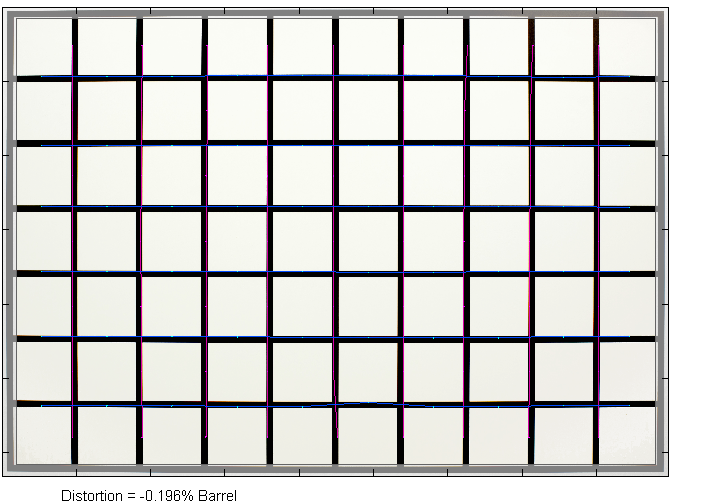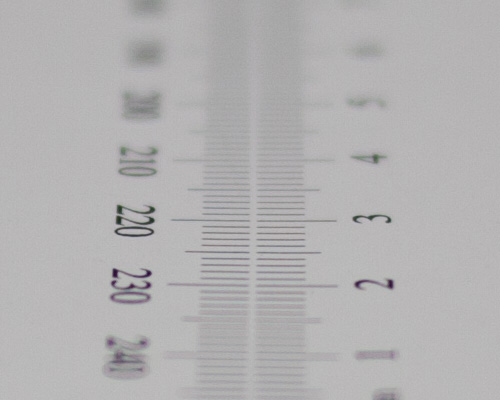|
Canon EF 35mm f/2 USM IS - APS-C Format Review / Test Report - Analysis |
|
Lens Reviews -
Canon EOS (APS-C)
|
|
Page 2 of 2

Distortion
In the APS-C scope, there are virtually no distortions to worry about.

Vignetting
The Canon lens showed a vignetting peaking at 2EV (f-stops) on a full format camera. On an APS-C camera, it takes advantage of the lens' sweet spot, so the vignetting is naturally reduced. However, at f/2 it remains visible with a light falloff of just under 1EV. The issue is already gone at f/2.8 though.

MTF (resolution)
As to be expected from a prime lens, the resolution characteristic is impressive. The image center is very good to excellent at f/2 and outstanding results between f/2.8 and f/5.6. The border resolution is very good to excellent in the relevant range. The extreme corners are somewhat softer at f/2 - accompanied by reduced local contrast. However, this weakness is mostly resolved at f/2.8 but the quality remains a bit short of the border region till about f/8. Diffraction effects start to have a limiting factor from f/11 onward although this setting is still easily good enough for very high quality images.
The field curvature (flatness of the focus field) is fairly low.
Please note that the MTF results are not directly comparable across the different systems!
Below is a simplified summary of the formal findings. The chart shows line widths per picture height (LW/PH) which can be taken as a measure for sharpness.
If you want to know more about the MTF50 figures you may check out the corresponding Imatest Explanations

Chromatic Aberrations (CAs)
Lateral CAs (color shadows at the image borders) stay below an average pixel width of 0.7px at the image borders. Interestingly this is somewhat higher compared to the full format scope (albeit the figure is always higher due to the increased pixel density).

Bokeh
The EF 35mm f/2 USM IS is obviously a quite fast lens with a comparatively pronounced bokeh in certain scenes so let's have a look at the findings here.
The out-of-focus highlight rendition is pretty clean with a slight outlining effect.
 The situation changes a bit when moving towards the corners. The highlight discs deteriorate and the outlining effect gets emphasized.
The quality of the general blur in the focus transition zone is pretty good. The foreground blur is a bit busy whereas the more critical background blur is quite smooth and better than most zoom lenses for instance and also significantly improved over its predecessor. Such a good bokeh is quite unusual for a wide-angle lens featuring an aspherical element.
The situation changes a bit when moving towards the corners. The highlight discs deteriorate and the outlining effect gets emphasized.
The quality of the general blur in the focus transition zone is pretty good. The foreground blur is a bit busy whereas the more critical background blur is quite smooth and better than most zoom lenses for instance and also significantly improved over its predecessor. Such a good bokeh is quite unusual for a wide-angle lens featuring an aspherical element.

Bokeh Fringing / Longitudinal Chromatic Aberrations (LoCA)
The so-called bokeh fringing refers to colored halos in the focus transition zone. Hard contrasts can have a purple color tint in the foreground changing to greenish beyond the focus point. The EF 35mm f/2 USM IS shows a medium amount of bokeh fringing at f/2. There're still some traces left at f/2.8 but the issue is gone from f/4 onward.
When browsing through the sample crops below, you may also notice that the focus point remains constant (=no so-called residual spherical aberrations).
|
Move the mouse cursor over the f-stop marks below to observe the respective LoCAs
|
| f/2 |
f/2.8 |
f/4 |
|

|
VerdictThe Canon EF 35mm f/2 USM IS already impressed us in our full format review and it continues to do so in the APS-C scope. The center performance is very good at max. aperture and excellent to downright superb at medium aperture settings. The borders quality is also very high. The extreme corners are somewhat low in contrast at f/2 and reduced resolution but very sharp when stopped down a bit. Lateral CAs are very low and the images are essentially free of distortions. Despite the sweet spot advantage, the lens exhibits some vignetting at f/2 but the issue is really limited to this aperture. Canon was able to fix the bokeh issue that plagued the old EF 35mm f/2 - especially the critical background blur is very smooth now and better than most lenses in this focal length class. You will be able to spot some bokeh fringing in critical scenes when shooting fully open but that's a typical behavior for such a fast lens anyway.
The build quality of the Canon lens is one a very high level with a constant physical length as highlight here. While probably not a killer argument, it is worth to point out that the new ring-type USM drive is extremely fast as well as virtually silent. The new image stabilizer is certainly a very welcome addition e.g. for low-light photography.
Given the high performance we'll also not complain (too much) about the higher pricing compared to its predecessor. So we certainly have a winner here and we'll not hesitate to provide a "highly recommended" once again! That being said, you may wonder whether the lens is really all that hot on the crop format - not in terms of performance but effective depth-of-field capabilities which are simply somewhat reduced on APS-C DSLRs (equiv. to a "56mm f/3.2" lens).
|